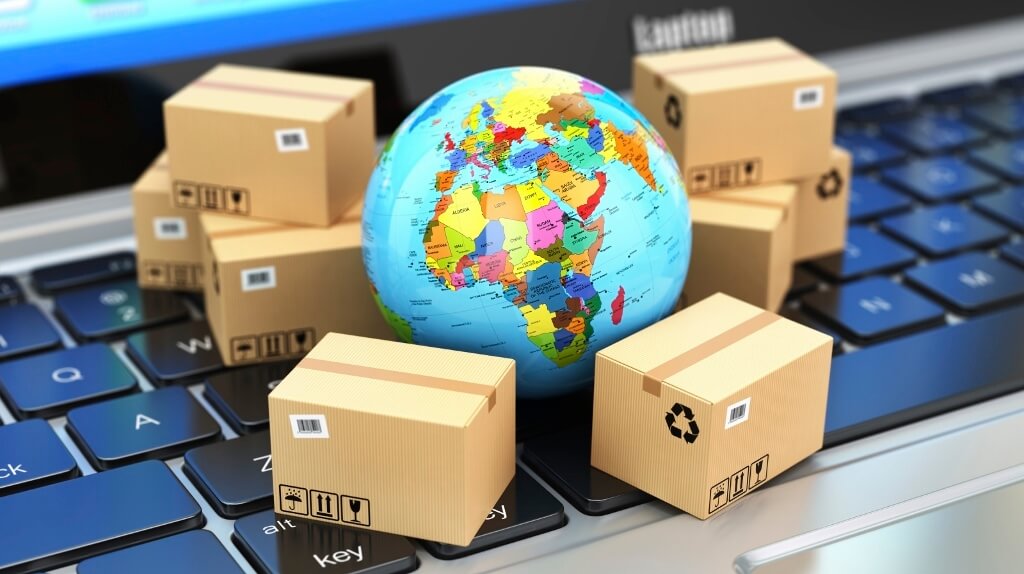Taking your business online and selling overseas could improve profit margins. Travelwrap made the leap 14 months ago, here's what founder Niamh Barker learned.
Top Tips On How To Take A Small Internet Business Global
Taking your business online and selling overseas could improve profit margins. Travelwrap made the leap 14 months ago, here's what founder Niamh Barker learned.

It was around 14 months ago that I made a strategic decision to grow our business globally and online. Until then our principal revenue stream was wholesale and our online presence was secondary to this.
We previously attended trade shows to engage with new customers. Our customers were mostly made up of retailers who bought our product at wholesale price for either their ‘bricks and mortar’ stores or their own online businesses.
We had 3 problems with this business model: we knit our cashmere in Scotland and so our manufacturing costs are expensive and our profit margins when selling to wholesale were becoming financially unviable. We were getting copycats and competitors both in the UK and overseas copying the Travelwrap’ concept and coming in at prices below ours; the designs were relatively easy to copy as they were simple and uncomplicated.
I did my sums and decided the only way to get this business to work profitably was to focus on the ecommerce business here in the UK and overseas. To allow this to happen, we changed our pricing structure (in line with competitors); we stepped away from being just a commodity and began to offer a design led range of Travelwraps (much less easy to replicate) and over the next 12 month built 4 parallel websites in 5 different currencies with a focus on international ecommerce.
Here are the top criteria I would advise anyone to consider when starting a profitable global business:
· Choose your market
We chose a few key markets with important characteristics; I regarded as ‘low hanging fruit’ e.g. English-speaking markets with an interest and admiration for the heritage and brand that a luxury niche business has to offer. First was The USA who interestingly had had brand exposure of the word ‘travelwrap’ thanks to one of our competitors and so our target audience found us quickly.
We then launched to Europe, Australia and Canada in quick succession. Taking your business global doesn’t mean you have to tackle every market simultaneously. I would advise a targeted approach: select the sectors you already have awareness of, those you know you are getting traffic / interest from.
· Get support
If you are uncertain of how to best open your business to a global market, get support; have your website analysed and review the opportunities that are already present online. We have worked closely with Grow Global an independent digital adviser that specialises in e-commerce systems, e-marketplaces and social media for international trade. Sarah Caroll and her team helped us develop our roadmap to manage our online export strategy.
· Consider the logistics
Selling to an international audience via an online platform sounds ridiculously easy right? Wrong. Each country has a different tax system you need to consider and shipping processes differ from one country to another. We sometimes use different couriers for example for different countries depending on price and efficiency.
You need to ensure that your website and your team has the capabilities to fulfill orders. From paperwork and orders to packing and shipping; all elements in between need to be planned – can your business handle it and more importantly do you have enough staff and capacity to do it successfully.
· Enhance your marketing
When you plan on expanding your business on a global level, you need to think about how to extend your online reach, especially through marketing – both online and off line. We launched a travel review blog (to engage with our target audience ) engaged globally through our social channels and hired a PR expert to ensure that we adopted a fully integrated online approach.
· Think about pricing
If you are shipping abroad, consider the destination’s currency, shipping processes and customs & duties. We operate our website on a platform called Magento which allows currencies on our different websites to be reset every 24 hours in the currency specific to that country.
We also absorb all the standard shipping costs which is one less barrier to a global customer buying our Travelwraps. After much consideration we have also set our USA website to include the taxes and duties costs so that our customers are not asked to pay these taxes before delivery.
· Localise your website
It is important to ensure you website talks directly to your new market. Having a platform that sells in GB£ isn’t going to entice a US audience; ‘speak’ to your new audience by pricing your products in their national currency and if you can make the shipping and returns/ delivery process as ‘barrier free’ as you can.
· Get personal
You are your brand (at least in the early days) It is therefore essential that you try and build a relationship with them, wherever they may reside. I always make a point of replying to a comment or review on our website or social media channels. If they send us positive feedback, I will personally thank them.
· Stay inspired
It is important to keep motivated, even when you hit challenging times We regularly see peaks and troughs in sales in the same country and between countries. We try and measure whatever we can with tools like google analytics and Facebook targeting, finding ways of learning from the metrics and refining our model.
As a last piece of advice, keep pushing the boundaries, keep thinking bigger and refining your model, check out what the gold standard companies are doing and learn from them- that is the joy of the internet.
Thanks for signing up to Minutehack alerts.
Brilliant editorials heading your way soon.
Okay, Thanks!



